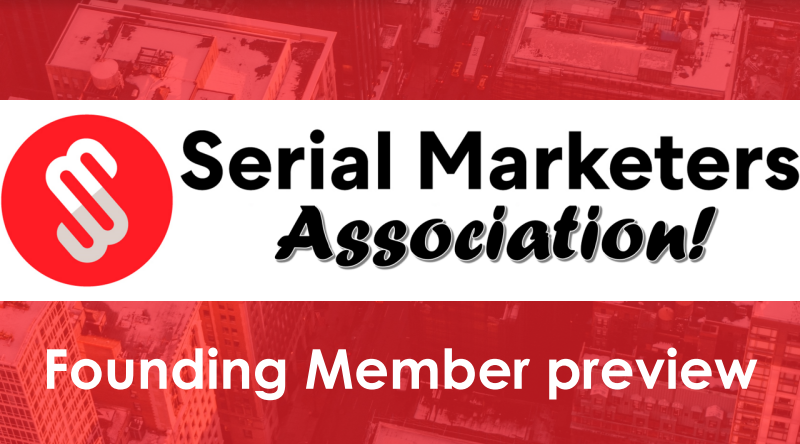Originally published in MediaPost's Social Media Insider. I&39;d love your comments below.
CPSA: The New Pricing Model For Social Media?
What&39;s the best way to price social media advertising or marketing programs?
That&39;s one of those questions that screams for the ever-honest "it
depends" answer. Maybe that&39;s because we need a new pricing model.
Let&39;s first take a look at some current options and review their
strengths and weaknesses in this context:
the overarching strength of social media. But the value marketers get
from social marketing isn&39;t just exposure — it&39;s something deeper.
is won&39;t do the same for Facebook, at least not on the same kind of
scale. CPC is tailor-made for direct-response marketers, while social
media is centered on building relationships. This is the classic
"square peg/round hole" issue.
rest easily, as marketers shouldn&39;t be driving a relationship-building
vehicle on a conversion track.
engagement metrics translate well to various social marketing programs,
such as time spent with a widget or percentage of a shareable video
viewed.
When you want exposure, traffic, conversions, or interactions, each of
these four pricing models comes in handy. But social marketing, when
done right, achieves something much different: relationships. How does
that fit in neatly with these pricing models?
To that end, I&39;ll throw out a fifth model: Cost Per Social Action
(CPSA). It&39;s for any action with a distinctly social quality that leads
to either new relationships (such as through "viral" referrals or
acquiring new followers and fans) or deepening existing relationships
(such as through "likes," comments, responses, and ratings).
The main benefit of CPSA is that marketers know they&39;re paying for
something social and relationship-oriented. More importantly, marketers
know they&39;re not specifically paying for exposure, traffic,
conversions, or interactions (though those can all provide additional
value). It&39;s an acknowledgement that social media is something else, so
it&39;s deserving of a new model, one that stresses relationships above
all else.
There are downsides too, and I&39;ll spend even more time on these:
There are others too, like CPL (Cost Per Lead) and CPS (Cost Per Sale).
So now marketers have to learn another?
to sell yet another pricing plan? Then again, some publishers like
VideoEgg have used Cost Per Engagement pricing to differentiate
themselves. Could some differentiate themselves by promoting CPSA?
to three letters so it stands a chance. Though you could argue that to
stand out, maybe the four-letter version will differentiate it.
things. Just looking at Facebook alone, can you really say that the
same pricing structure can be used to cover everything from the number
of fans accumulated to the number of virtual gifts sent? Then again,
CPM covers everything from an impression on a portal&39;s homepage to an
impression that&39;s highly contextually relevant on a blog. Similarly,
CPC is used for search and contextual marketing, two very different
approaches.
as CPI — a Cost Per Install model for widgets. CPSA doesn&39;t account
for enough of the intricacies of social media that are already being
addressed directly.
veers from reach and sales, the harder it&39;s going to be to tie this
into marketers&39; traditional metrics.
I&39;ll leave it to you now: is CPSA needed? Are some already using a
version of it? Is this latest version of alphabet soup past its
expiration date? Share your thoughts in the comments to address CPSA
the way it should be: socially.







People reacted to this story.
Show comments Hide commentsI LOVE THIS
I always get the ROI for social media question (I especially hate it from brass button suits who aren’t calculating ROI on any other vehicle but somehow think they can demand it from this one)
naturally if your are going to be able to calculate the CPSA you will need the ability to measure actions that are outside of your control, domain etc. The conversations and relationships are happening everywhere. Some tool like Radian 6 needs to allow us to calculate this and attach a value to each action.
For example the worth of a blog post depends on the traffic to the blog (both quality and quantity) and it’s influence on other blogs, number of comment, and social media links and sharing that come from it.
The CPSA model needs tiers. Tier 1 is awareness, Tier 2 is light engagement, Tier 3 is socially visible engagement, Tier 4 is relationship oriented, Tier 5 is advocacy oriented.
The challenge becomes tracking outside the click or contained environment. And to Josh’s point, that will involve a mix of listening and measuring.
ROI in business is rarely a direct line. It is only direct when the sale is direct. Social is not digital, but it is observed in digital environments.
It is our responsibility to track as best we can. But our KPIs (or KCIs) will be bigger than what we can effectively and efficiently measure.
And that’s the challenge of social metrics. We can observe, we can measure, we can prove. But it will always be bigger than what we can show. Then again, so is the value of television, print, radio and OOH.
Here’s a social action for you, a comment on your blog.
Question is though…what’s more valuable, my comment on your blog or when I click “share” from Google Reader and push it out to my network via ping.fm/twitter, etc.
The comment feels like deeper engagement w/you, but the sharing is probably more valuable for you.
I do love the thinking though and it’s clear that the current metrics don’t work well, which you outlined well.
Thanks for this great response, Jeremy.
To your point though, just as a marketer might pay a $20 CPM for a targeted placement on WSJ.com and $0.50 CPM for a remnant ad buy on MySpace, a marketer could pay $1 for comments received but some multiple of that for sharing actions. You illustrate some of the flexibility this has. And it can be different for different marketers and situations – a run of site WSJ.com buy could be worth less than a psychographically targeted buy on MySpace, or a marketer might pay a premium to be on MySpace if it thinks the site perfectly aligns with its target audience.
Josh, I appreciate the great response here. And yes, value determinations must be made, just like run of site buys aren't the same as targeted placements. I could see BuzzLogic also playing a big role here.
Loving the thinking here – I'm in total agreement. I was just working on a presentation with someone at they sketched out a rough landscape of social media, and the one change I made was adding in some recognition of the offline impact.
Compared to traditional media, social may have certain challenges especially in how new it is and how wide the ramifications are, but it does have myriad advantages, as the rest of digital does.
David, to further expand on my suggestion on fuctional metrics on twitter. We need metrics with clear semantics. Some of these metrics may be custom created for a specific brand, consumer profile, activity and social media context.
I am proposing a distinction between “infrastructure metrics” and “functional” metrics. All metrics have semantics- hence I am calling these new “class” of metrics functional metrics.
More here:
http://randomjunkyramblings.blogspot.com/2009/08/sustaining-brand-conversation-behavior.html
That’s a great context to generating and classifying metrics. I was thinking of breaking these down to infrastructure metrics- where,as you have pointed out, what we measure is bigger than what our measurement is built for- and functional metrics- where our measurements get closer to capturing specific brand/ mindshare/ revenue impact, and perhaps tie this to brand equity measurements. 😀
Besides the specific brand, consumer profile, activity and social media context, various factors that come into play here are quality of data, privacy concerns and analytics capabilities.
Thanks, Mohit. Really interesting breakdown of functional vs infrastructure metrics. Curious to hear more specifics on the kinds of metrics you mean.
Hi David, this is a superb link:
http://www.funnelholic.com/2009/03/12/memo-to-the-cfo-3-lead-generation-metrics-that-matter/comment-page-1/#comment-1722
CPO could be called a functional metric, while CPL could be called an infrastructure metric. For someone with truckloads of B2B experience, this makes sense.
This needs more thought, and my constraint is time, hence been keepoing this under wraps, but I think I can come up with a structure for infra and func metrics. Some of these may be common measures famailiar to brand marketers, and some might be a little “out there”.
Before I dig into some more details, the bigger problem is missing the forest for the trees. As I have mentioned before- Marketing is following Social Media. 🙁
Then they are folks who think why are folks talking ROI in social media when they blow a million dollars on a Superbowl ad? We need to build the kind of “bridges” in social media that already exist in traditional media and which allow traditional media to justify the spend to some extent. That’s a separate problem.
So taking the sales theme further (you can see I am trying to leverage my B2B sales/ account management time) here’s what I would call an infrastructure metric derived out of a sales force effectiveness ratio: social media effectiveness ratio = social media “wins”/ customer “contacts”.
Now, you might call sales force effectiveness metric a functional metric that has been translated into an infrastructure metric. True, wins and contacts are tied to the platform. We then build a cross platform metric that takes this data and spits out the “functional metric” results.
The 4 Philips brand equity measures- Uniqueness, Relevance, Attractiveness and Credibility- are a tougher portability nut to crack and I will find ways around. However, a quick metric that is “translatable” that would be familiar to brand and category managers- ACV.